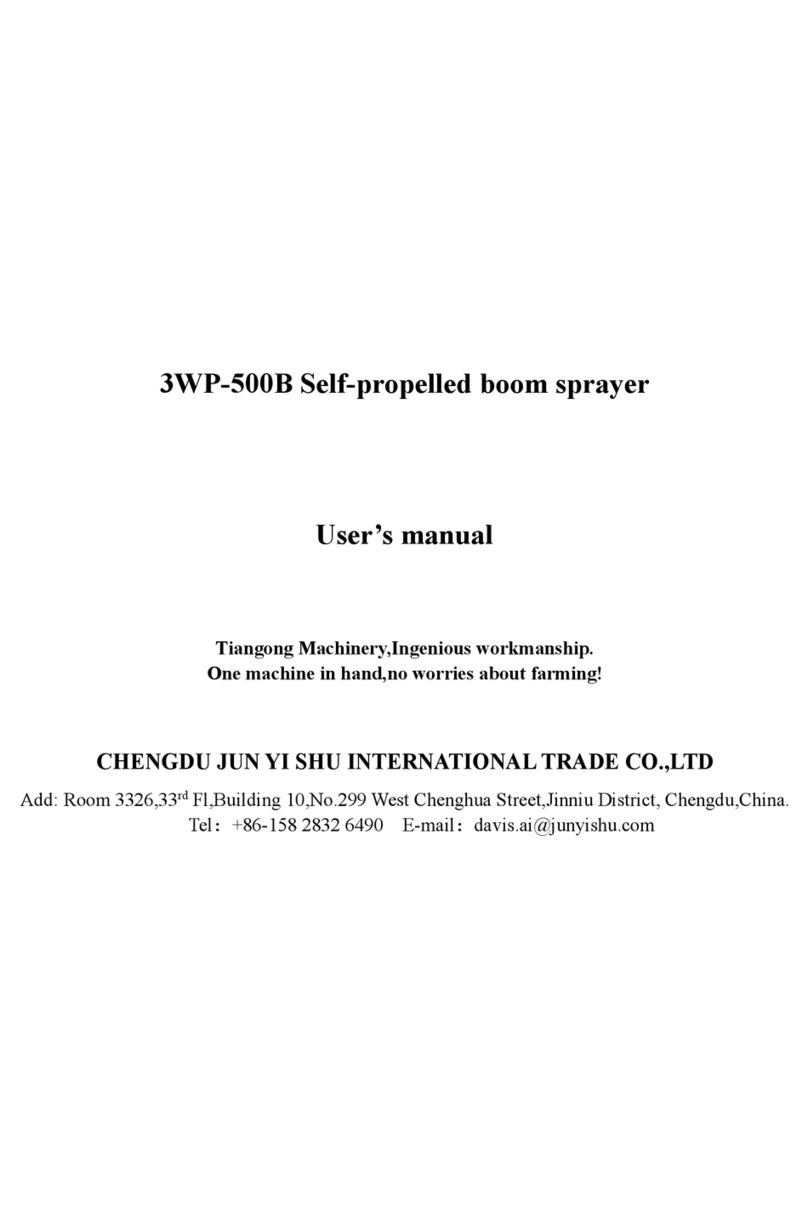
Part 1 Product introduction
With the development of Chinese agriculture and the change of planting mode, the demand for
agricultural tillage and finishing machinery will be more and more, and the functional requirements of all
kinds of tillage and finishing machinery will be more and more. Considering the vast territory of our
country, the soil quality varies greatly, and the farming habits and agronomic requirements of local
farmers, our company has designed and developed a multifunctional,adaptable,safe and reliable new-type
field management machine after more than two years of tests on various types of machines,soil and
operation modes,and integrating the advantages of various models Meet the needs of farmers.
The machine has the advantage like:
1.Safe and reliable, low labor intensity
--The main cutting tool adopts forward rotation mode, which can prevent the cutting tool from injuring
people. In addition, emergency stop and clutch device are installed to stop the vehicle quickly in case of
emergency.
--Supporting power can be started easily by power distribution mode.
--Add differential steering function and steering device.
--Equipped with a seat frame, the operator can operate on the machine easily.
2.One machine has multiple functions and perfect functions
--The walking part of the machine has six forward gears and two reverse gears. The traveling axle is
hexagonal, which is convenient for installation. Walking wheels can be selected according to different
operation requirements: paddy wheel, dry land wheel, multi-purpose wheel, cultivation wheel and rubber
wheel.
--The front output shaft of the machine has positive and negative rotation, high and low speed, and can
realize rotary tillage, ditching, weeding, soil cultivation and other functions. The cutter shaft is hexagonal,
which is convenient for quick replacement and installation of different tools.
--The rear output shaft of the machine can realize ridging and soil cultivation.
--The right output shaft of the machine can be matched with water pumps, generators, hydraulic presses,
sprayers,etc., and can realize pumping, spraying and other operations.
--The rear part of the machine body is equipped with universal hanging interface, which can be
equipped with deflection plow, towing box, fertilizer sowing box, ridging box, seat frame, etc.,which can
realize the functions of plowing and transferring.
3.Good power adaptability and strong machine adaptability
--The machine is designed with self-adaptive frame and can be equipped with various assembly forms
of power. Diesel or gasoline engine, vertical or horizontal, air-cooled or water-cooled are suitable. The
power matching range is from 5.1kw to 9kw.




























